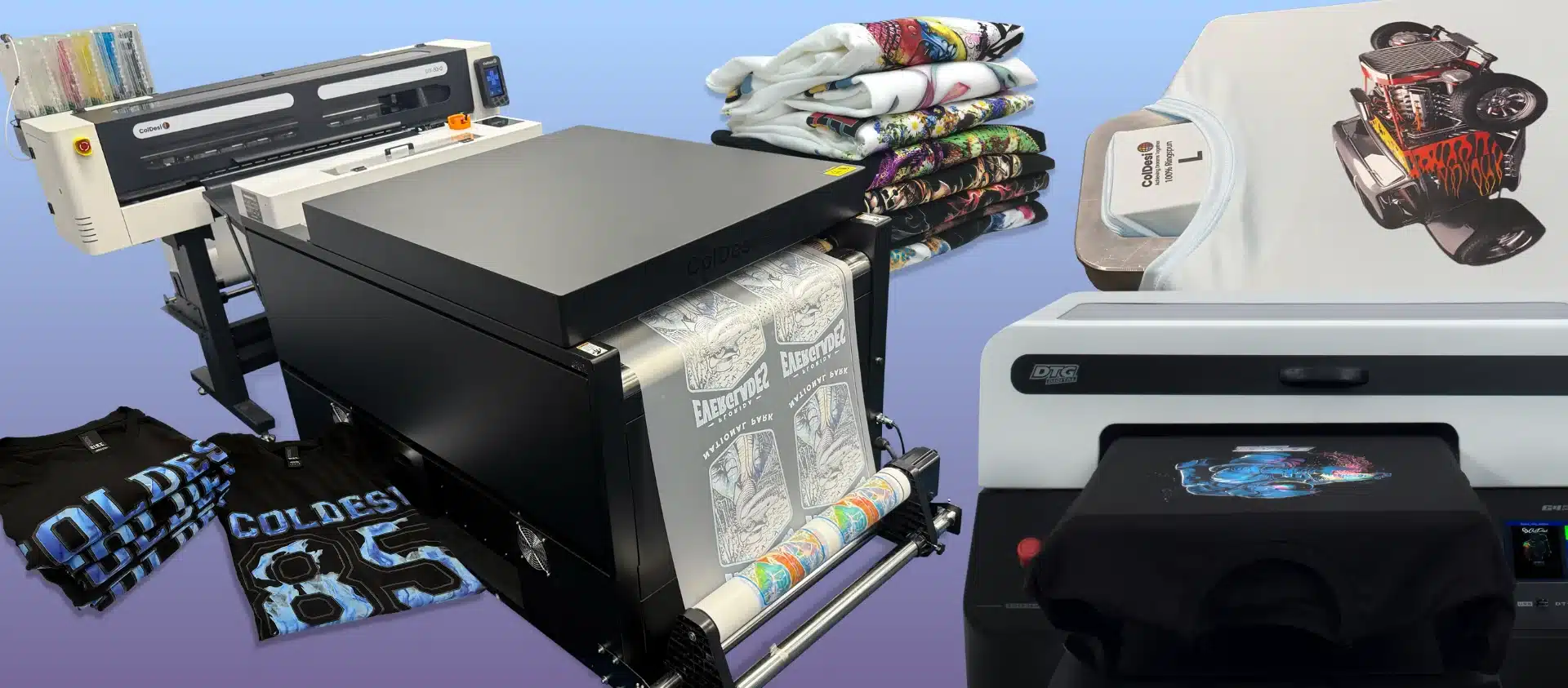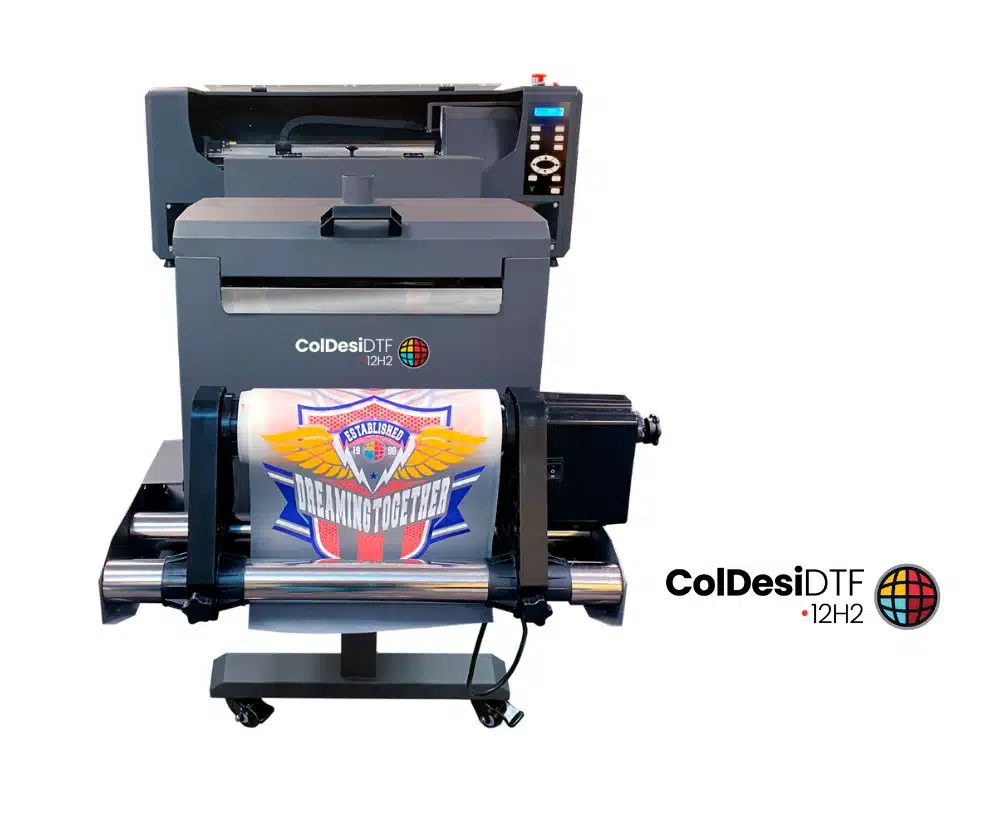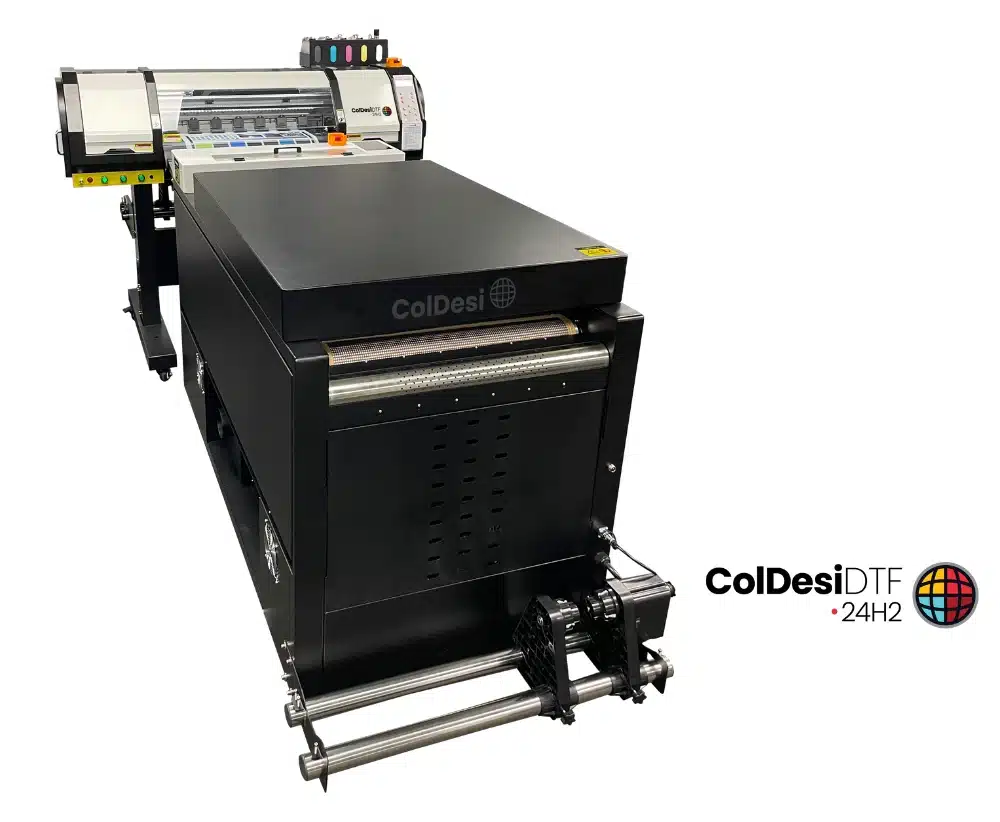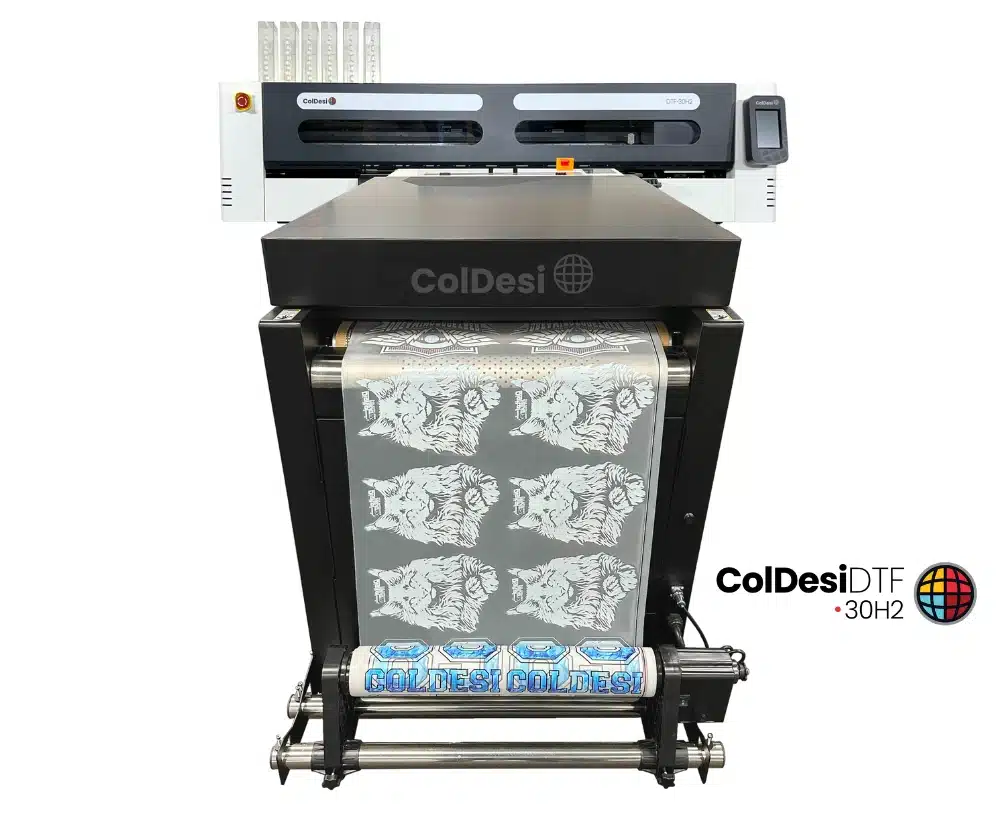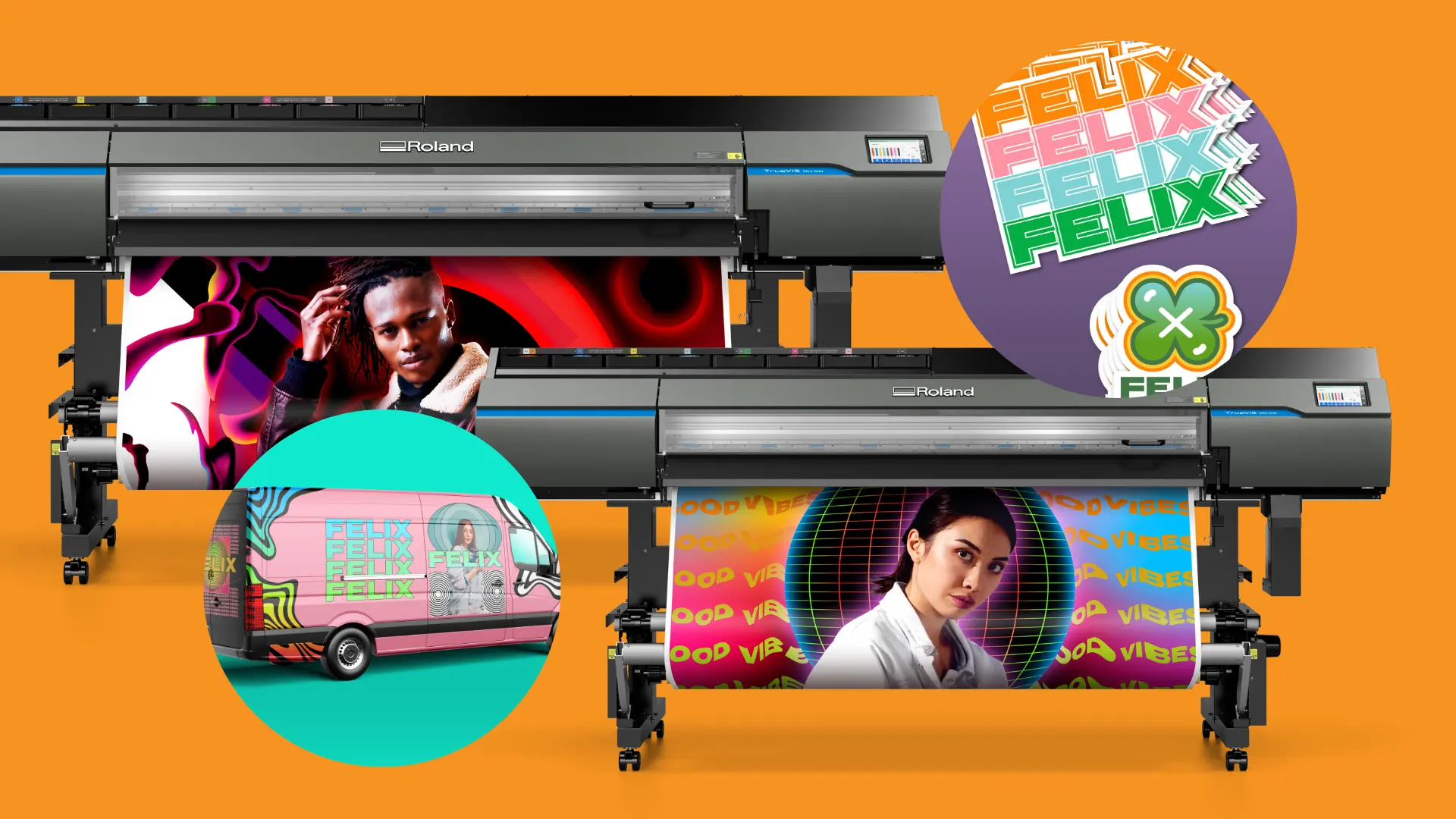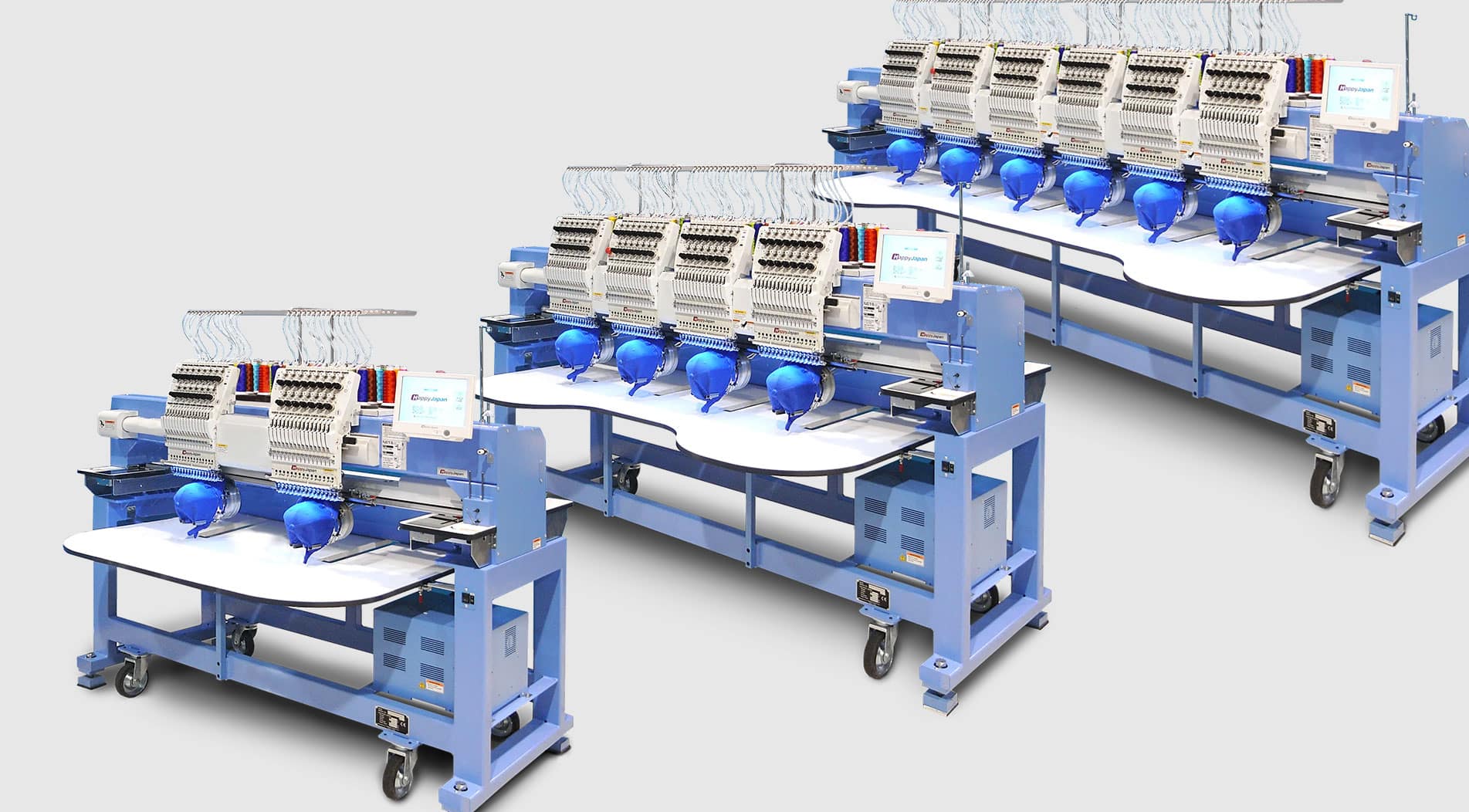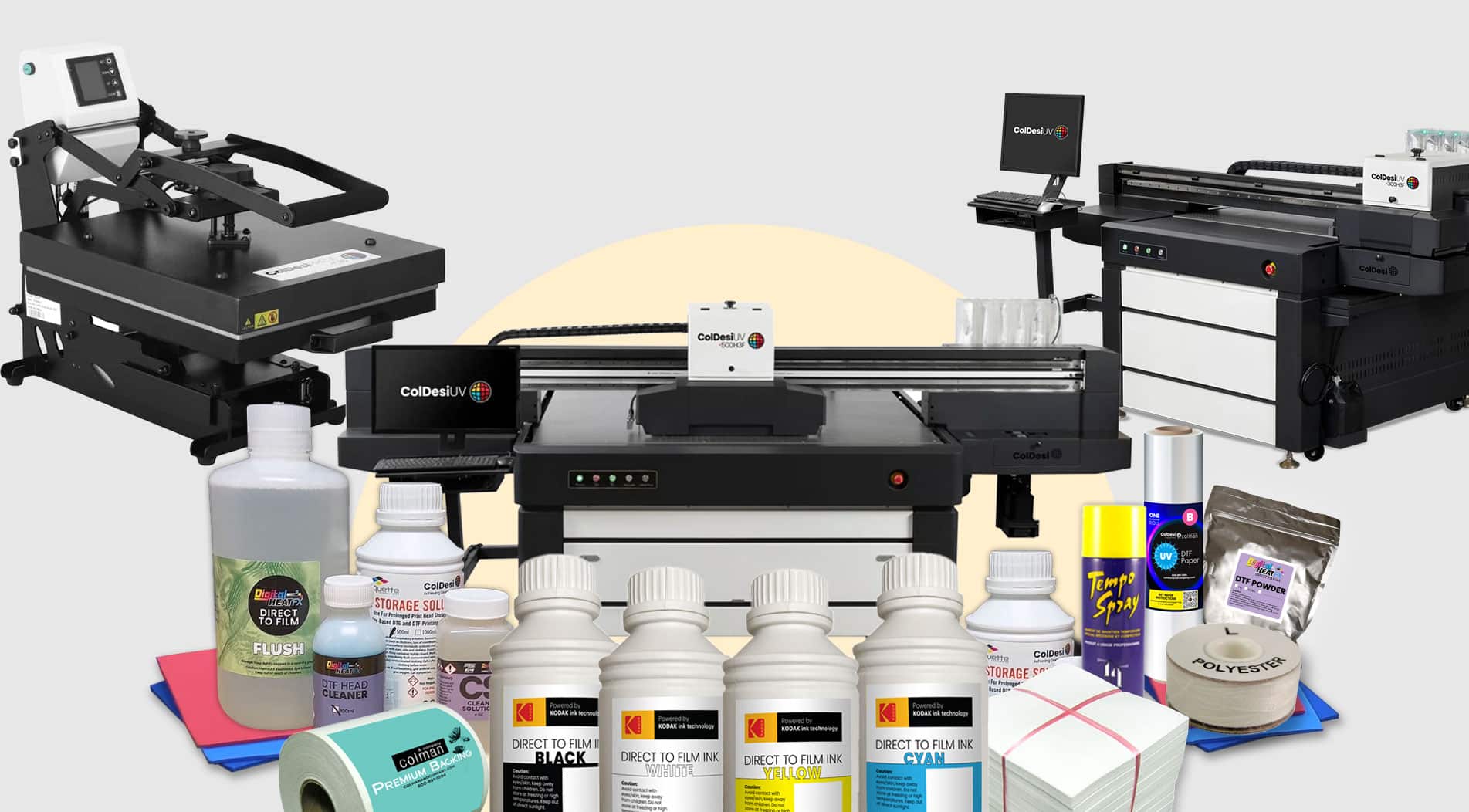DTG businesses are struggling to keep up with the growing demand for custom apparel as on-demand fulfillment continues to rise. These businesses face key challenges: how to boost productivity, print on a wider range of garment types, and reduce labor costs without sacrificing print quality. To stay competitive and meet demand, many are now integrating DTF printing into their existing operations.
Integrating DTF into a DTG-based business is not hard, but it does require a shift in workflow, space, and training. Businesses often wait due to budget concerns, comfort levels, or uncertainty about ROI. Those who make the move early gain a competitive edge with faster fulfillment, lower labor costs, and the ability to print on more garment types.
Adding DTF printing does not mean replacing your current technology; instead, it should complement your existing workflow, serving as an addition to your business that expands capabilities without disrupting what already works.
Why DTF Complements DTG Rather Than Competes with It
- Does not work well on dark polyester and performance fabrics
- Time-consuming pretreatment and drying steps
- Limited profitability for single runs or complex fulfillment workflows
DTF Eliminates Many of These Hurdles
- Works across a wider range of materials (cotton, poly, blends, synthetics)
- Removes the pretreatment step entirely
- Enables printing and storing transfers for later application
- Supports true on-demand micro-fulfillment
Streamlining Your Production Flow with DTF + DTG
|
Task
|
DTG Workflow
|
DTG + DTF Workflow
|
|---|---|---|
|
Pretreatment |
Manual or auto spray, then drying |
Eliminated for DTF jobs |
|
Garment Compatibility |
Best on 100% cotton, limits with poly |
DTF expands to poly, tri-blends, canvas, nylon, etc. |
|
Print Time
|
Slower, especially with color + white layers
|
Comparable or faster with DTF + 4-head printers
|
|
Finishing & Packaging |
Must press immediately
|
DTF transfers can be stored, shipped, or applied later
|
|
Labor Load
|
Requires more operator time
|
Automated DTF workflow with shaker/dryer reduces labor
|
This hybrid model allows decorators to route each job through the optimal method:
- Keep DTG for cotton-rich, soft-hand, photographic prints.
- Use DTF for complex logos, stretch wear, hats, bags, or polyester-heavy blends.
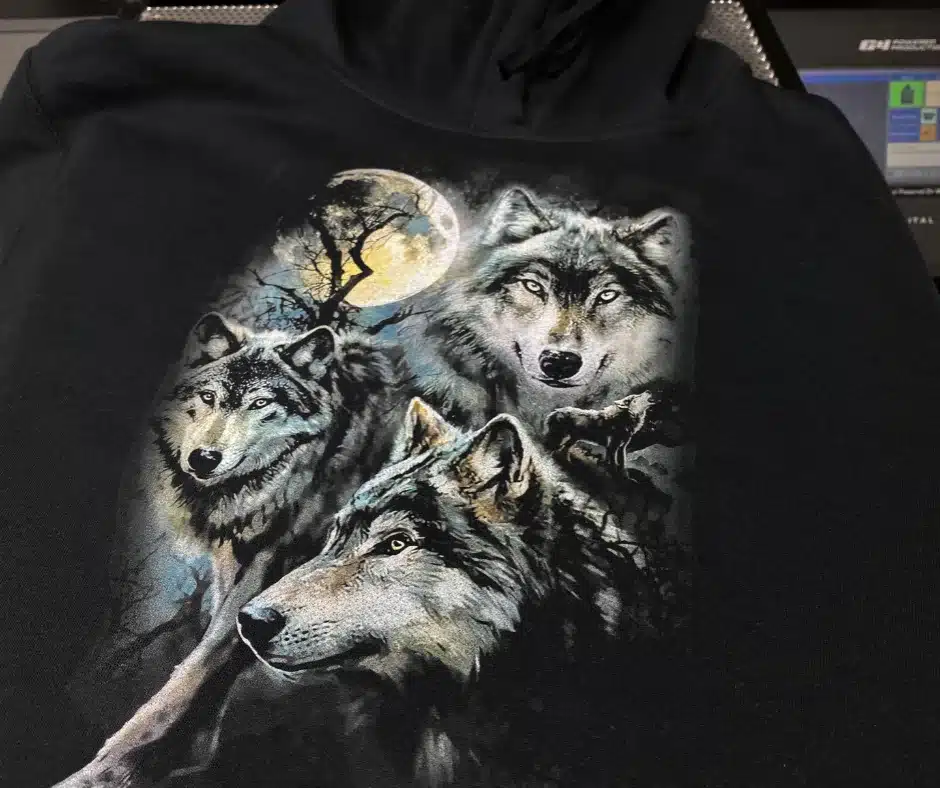
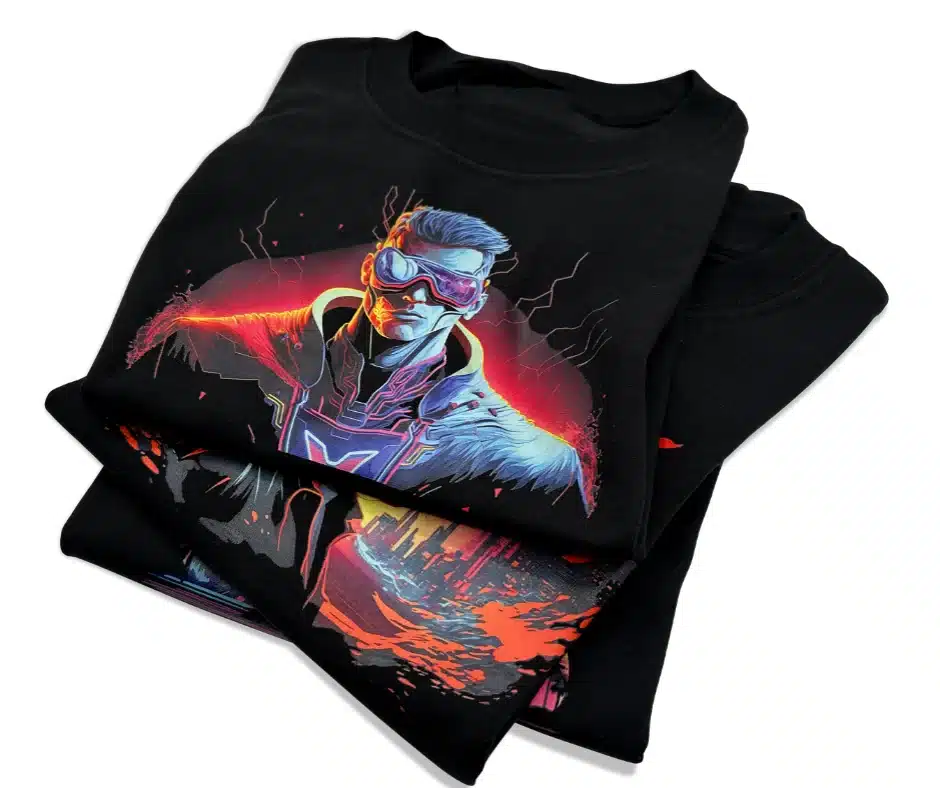
When Does It Make Sense to Add DTF to Your Business?
The tipping point to bring DTF into your workflow is usually tied to job variety, labor cost, and volume. Ask yourself:
Are you:
- Turning down orders because DTG doesn’t work well on the material?
- Spending too much time pretreating or re-pressing garments?
- Seeking a way to fulfill online orders more efficiently?
If your answer is yes to any of these, then even a DTF system may unlock more profitability.
Choosing the Right DTF System for Your Growth Stage
ColDesi offers a range of DTF printers, suitable for different production volumes and automation needs:
ColDesi 12H2
- 12" film width with 2 Epson i3200 printheads
- Compact footprint, ideal for small shops
- Prints 50 (8 x 10 in) transfers/hour
- Best for: Supplemental DTF work or micro-fulfillment startups
ColDesi 24H2
- 24" film width with 2 Epson i3200 printheads
- Inline powder/shaker and dryer
- Supports 100 (8 x 10 in) transfers/hour
- Best for: Growing businesses ready to expand output and capability
ColDesi 30H2
- 30" film width with 2 Epson i3200 printheads
- Wider printable area for larger design fulfillment
- Prints 180 (8 x 10 in) transfers/hour
- Best for: Shops routing 30–50% of jobs through DTF or fulfilling online orders
ColDesi 24H5
- 24" film width with 4 Epson i3200 printheads for high-speed production
- Your choice of color gamut (basic and expanded)
- Prints 300-400 (8 x 10 in) transfers/hour
- Best for: Wholesale decorators and high-volume B2B production
How to Transition Smoothly
1. Pilot Simple DTF Jobs First
- Simple Logos and Line Art: These jobs allow for testing color accuracy, fine-line detail, and adhesion performance without complex gradients or backgrounds.
- Poly Blend Tees & Performance Fabrics: Materials that are problematic for DTG, like moisture-wicking fabrics or heavily blended synthetics, are ideal for DTF.
Tip: Compare the output side-by-side with your DTG results in terms of vibrancy, hand feel, and time-to-ship. You’ll quickly identify where DTF becomes your go-to option.
2. Create Separate Job Routing Rules
- Fabric Type
- DTG: 100% cotton
- DTF: Poly blends, nylon, canvas, fleece, and dark synthetics
- Order Size
- DTG: Small, multi-color jobs with slow turnaround
- DTF: Medium to large orders, repeated designs, stored transfers
- Design Complexity
- DTG: Photorealistic images on light-colored cotton
- DTF: Multi-color logos, dark shirts, difficult placements
Establishing a job routing matrix—even something as simple as a laminated chart in the production area—helps reduce errors and maximize throughput.
3. Optimize for Labor Efficiency
- Invest in Automation Early: Manual powdering and curing work for ultra-low volume setups, but once you hit consistent daily orders, an automated shaker/dryer system saves hours and ensures consistent quality.
- Designate a Transfer Staging Area: Since DTF prints can be stored and used on demand, create a labeled bin or shelving system to:
- Store printed transfers by customer or SKU
- Batch jobs for remote fulfillment or later application
Result: You remove the “one-shirt-at-a-time” bottleneck from DTG and enable batch production across your operation.
4. Train Your Team
Even experienced DTG operators need tailored onboarding for DTF. Prioritize training in:
- RIP Software Configuration
- Learn how to control ink laydown for DTF (especially white underbase)
- Set up queues and templates for repeat jobs
- Understand ICC profiles for accurate color on film
- Film & Powder Handling
- Avoid static issues by using gloves or film holders
- Store powder in dry environments to prevent clumping
- Transfer Application Techniques
- Understand temperature, pressure, and peel timing for different garment types
ColDesi Advantage: Every DTF printer package includes onboarding, setup guidance, in-depth training, and access to ongoing technical support.
Adding DTF printing to your DTG-based business operation can speed up fulfillment, open new apparel markets, and enable on-demand transfer sales. ColDesi’s complete ecosystem of DTF printers, shakers, training, and supplies makes the transition smooth and reliable.

